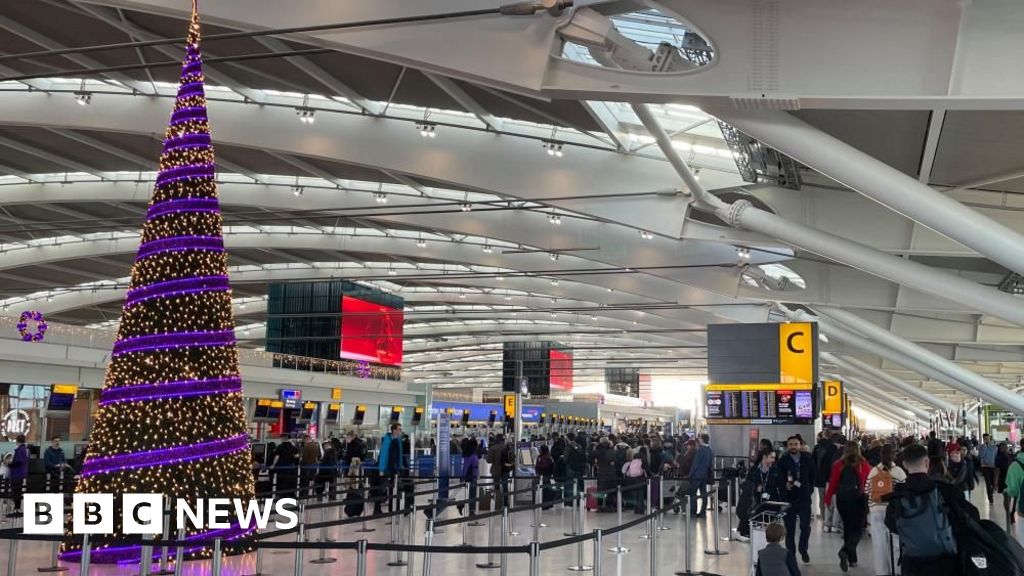Thousands of people are still believed to be held as prisoners of war since the conflict erupted, with others missing. But Fabrizio Carboni, the Red Cross’ regional director, said the release “gives a sense of momentum” for efforts to end the war.
“This will show that there is no way back to violence,” Carboni told journalists. The Red Cross later said that a total of 318 detainees were released on Friday.
In Sanaa, the Houthi-held capital of Yemen, dozens of former prisoners descended from a plane to a marching band and traditional Yemeni dancers, wearing ribbons with the colors of the Yemeni flag. Family members and a reception line of Houthi political leaders greeted the released with hugs and kisses.
An injured man was seen supported by medical workers. Carboni acknowledged some former prisoners needed medical care before making their flight, but “nothing out of the ordinary.”
Meanwhile, prisoners released by the rebel Houthis took flights to Aden, the seat of the country’s internationally recognized government allied with Saudi Arabia. Two rounds of simultaneous flights Friday between Aden and Sanaa transferred the prisoners.
As part of the exchange, flights will transport prisoners from government-controlled cities inside Yemen and Saudi Arabia to Sanaa, said Majed Fadail, a deputy minister for human rights for Yemen’s government.
Yemen’s conflict began in 2014 when the Houthis seized Sanaa and much of the country’s north. The internationally recognized government fled to the south and then into exile in Saudi Arabia.
The Houthi takeover prompted a Saudi-led coalition to intervene months later and the conflict turned into a regional proxy war between Saudi Arabia and Iran, with the United States long involved on the periphery, providing intelligence assistance to the kingdom. However, international criticism over Saudi airstrikes killing civilians saw the U.S. pull back its support.
The war has killed more than 150,000 people, including fighters and civilians, and created one of the world’s worst humanitarian disasters.
The prisoner exchange had been scheduled to start earlier in the week but was delayed because of apparent logistical reasons.
The deal calls for the Houthis to release more than 180 prisoners, including Saudi and Sudanese troops fighting with the Saudi-led coalition, and four Yemeni journalists. The journalists were detained in recent years and sentenced to death by a Houthi-controlled court in a trial described by Amnesty International as “grossly unfair.”
The deal also includes the release of top military officials held by the Houthis since the start of the war. Among those released Friday were Maj. Gen. Mahmoud al-Subaihi, who was the defense minister when the war erupted, and Nasser Mansour Hadi, the brother of former Yemeni President Abed Rabbo Mansour Hadi.
In return, the Saudi-led coalition and Yemeni government are scheduled to release more than 700 Houthis they hold, the rebels said.
Saudi Arabia has already freed 13 Houthi detainees who returned to Sanaa on April 9, ahead of a trip by Saudi ambassador to Yemen, Mohammed bin Saeed al-Jaber, to the Yemeni capital. Including those detainees, the deal should see 869 prisoners released, the Red Cross says.
Al-Jaber’s visit to Sanaa was part of Oman-brokered talks between Saudi Arabia and the Houthis, aiming to revive a nationwide cease-fire that expired in October and relaunch inter-Yemeni peace talks to end the conflict. Those talks concluded on Friday and were “serious and positive,” said Mohammed Abdul-Salam, the chief Houthi negotiator, adding there will be another round of talks. He didn’t give further details.
A deal last month between Saudi Arabia and Iran to restore ties has boosted negotiations between the kingdom and the Houthis and invigorated hopes of a negotiated settlement to the Yemeni conflict.
“You need a form of political courage to agree on a peace plan … and that’s in the hand of the parties,” said Carboni, the Red Cross official.
Hans Grundberg, the U.N. envoy for Yemen, lauded the release and said that “thousands of Yemeni families are still waiting for the return of their loved ones.” He also urged for a U.N.-brokered solution to end the war.
However, some analysts fear that Saudi Arabia’s withdrawal could see a new version of the conflict erupt between Yemen’s rival administrations. There are also secessionists who want to restore a separate country of South Yemen, which existed from 1967 to 1990.
“I see prospects for temporary peace between the Saudis and the Houthis but escalation of violence within Yemen,” said Nadwa Dawsari, a nonresident scholar with the Middle East Institute, a Washington-based think tank.
Yemen also remains home to al-Qaida in the Arabian Peninsula, viewed by Washington as a dangerous offshoot of the Islamic extremist group. The group has been able to take advantage of the conflict’s chaos to establish bases in the south of the country.
The Arab world’s most impoverished country, Yemen is also struggling with devastated infrastructure and gutted medical services that the prisoners, many of whom are injured and seriously ill, will be coming home to, said Afrah Nasser, a nonresident fellow at the Arab Center Washington DC.
“This is the sad part of this happy news,” she said.
Magdy reported from Cairo. Associated Press writer Jon Gambrell in Dubai, United Arab Emirates, contributed to this report.















































